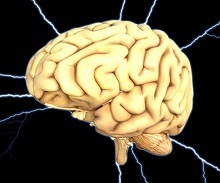 Deep brain stimulation (DBS) can halve the symptoms of severe obsessive-compulsive disorder (OCD), according to the findings of a pooled data analysis of available evidence, which has been published online in the Journal of Neurology, Neurosurgery and Psychiatry (JNNP). The analysis also found that two thirds of those affected experienced substantial improvements within two years, but highlighted multiple potential complications and limitations of DBS for this indication as well.
Deep brain stimulation (DBS) can halve the symptoms of severe obsessive-compulsive disorder (OCD), according to the findings of a pooled data analysis of available evidence, which has been published online in the Journal of Neurology, Neurosurgery and Psychiatry (JNNP). The analysis also found that two thirds of those affected experienced substantial improvements within two years, but highlighted multiple potential complications and limitations of DBS for this indication as well.
While drugs and cognitive behavioural therapy (CBT) can be very effective in treating OCD and its symptoms, these approaches are not successful in roughly one in 10 cases—and this led researchers to further investigate DBS, which has emerged as an alternative treatment for those with severe OCD symptoms.
Various prior studies have suggested that the technique can be effective in people with OCD, but they have not always quantified the impact of potentially influential factors, according to the researchers.
In a bid to account for this, and to update the existing body of evidence, they systematically reviewed and pooled the results of 34 clinical trials published between 2005 and 2021, with the aim of critically assessing how well DBS alleviates OCD and associated depressive symptoms in adults.
The 34 studies included 352 adults with an average age of 40, and severe-to-extreme OCD—the symptoms of which had not improved despite treatment. In 23 of the studies, participants were required to have had persistent symptoms for five or more years before consideration for DBS surgery. Of the remaining 11 studies, one had a requirement of more than a decade of symptoms and two or more years of failed treatment; another required at least one year of failed treatment; and five did not specify any requirements.
On average, symptoms had persisted for 24 years across studies included in the systematic review and meta-analysis. Coexisting mental health issues were reported in 23 studies and included major depression (over half of the total participants), anxiety disorder, and personality disorder. The average monitoring period after DBS implantation was two years.
The final pooled data analysis, which included 31 studies involving 345 participants, showed that DBS reduced symptoms by 47%, and two thirds of participants experienced substantial improvement within the monitoring period. In addition, secondary analysis revealed a reduction in reported depressive symptoms, with complete resolution in nearly half of all participants and partial response in a further 16%.
Some 24 of the studies reported complete data on serious side-effects, including hardware-related complications; infections; seizures; suicide attempts; stroke; and the development of new obsessions associated with stimulation. Overall, 78 participants experienced at least one serious side-effect.
These findings prompt the researchers to conclude that there is “a strong evidence base” in support of the use of DBS for the treatment of severe, persistent OCD and associated depression. However, they also caution that “while these results are encouraging, it is important to remember that DBS is not without its limitations”.
“First and foremost, it requires chronic implantation of hardware and carries the associated risk of complications,” Sameer Sheth (Baylor College of Medicine, Houston, USA) and colleagues note in JNNP. “Furthermore, although we report a less than 1% incidence of de novo obsessions involving the DBS patient programmer or the device itself, it remains a significant barrier to the effective implementation of DBS for OCD in certain patients.
“Successful application of DBS requires a close therapeutic alliance between patient, neurosurgical and expert psychiatrist teams in centres that specialise in implantation and programming of the device.”













